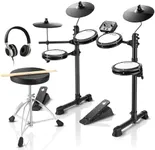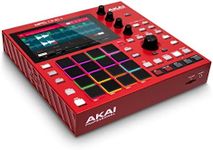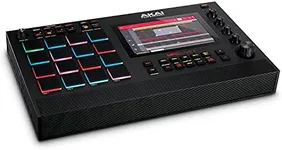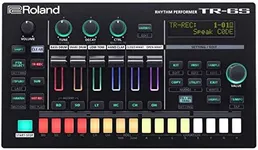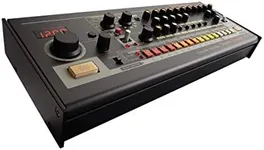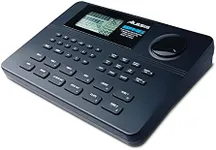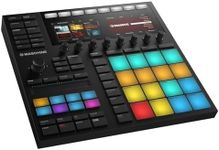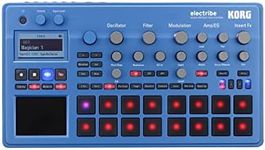Buying Guide for the Best Drum Machines
Choosing a drum machine can be an exciting journey, especially if you’re looking to add rhythm and groove to your music. Drum machines come in many shapes and sizes, each offering different features and sounds. The best way to pick the right one is to think about how you plan to use it—whether for live performances, studio production, or just for fun at home. Understanding the key specifications will help you find a drum machine that matches your musical style and workflow.Sound Engine TypeThe sound engine is what creates the drum sounds in a drum machine. There are mainly two types: analog and digital. Analog drum machines use real electronic circuits to generate sounds, often resulting in warm, punchy, and classic tones. Digital drum machines use samples or digital synthesis, offering a wider variety of sounds and more flexibility. If you love vintage, classic drum sounds, analog might be your preference. If you want versatility and the ability to load your own samples, digital is a better fit. Think about the style of music you want to make and whether you prefer classic or modern drum sounds.
SequencerThe sequencer is the part of the drum machine that lets you program rhythms and patterns. Some sequencers are very simple, letting you create basic loops, while others are more advanced, allowing for complex arrangements and real-time changes. If you want to quickly make beats and jam, a simple sequencer is great. If you plan to build intricate songs or perform live, look for a drum machine with a more advanced sequencer. Consider how much control you want over your rhythms and how you like to work—do you prefer hands-on tweaking or simple, straightforward programming?
Number of Sounds/VoicesThis refers to how many different drum sounds or instruments the machine can play at once. Some drum machines are limited to a handful of sounds, while others can play many layers together. If you want to create simple beats, a few sounds may be enough. For more complex music with lots of layers, look for a drum machine with a higher number of voices. Think about the genres you want to explore and whether you need just basic drums or a full percussion section.
ConnectivityConnectivity covers the ways you can connect the drum machine to other gear, such as computers, synthesizers, or audio interfaces. Common connections include MIDI, USB, audio outputs, and sometimes CV/Gate for modular setups. If you want to use the drum machine with other instruments or record into a computer, make sure it has the right connections. Consider your current setup and how you plan to expand in the future—having the right ports can make your workflow much smoother.
Built-in EffectsSome drum machines come with built-in effects like reverb, delay, or distortion, which can add character and depth to your beats. If you want to shape your drum sounds without extra equipment, built-in effects are very useful. If you prefer to process your sounds externally or keep things simple, you might not need this feature. Think about how much you want to experiment with sound design and whether you want everything in one box.
Portability and Build QualityPortability refers to how easy it is to carry the drum machine around, while build quality is about how sturdy and reliable it feels. If you plan to travel or perform live, a compact and robust drum machine is ideal. For studio use, size may not matter as much, but a solid build is always a plus. Consider where and how you’ll use the drum machine most often—at home, in the studio, or on the go.
User InterfaceThe user interface is how you interact with the drum machine—buttons, pads, screens, and knobs. A clear, intuitive interface makes it easier to create and tweak beats. Some machines have lots of hands-on controls, while others rely more on menus and screens. If you like to experiment and play live, a tactile interface with pads and knobs is helpful. If you’re comfortable with menus and want more features, a more complex interface might suit you. Think about your workflow and what feels most natural to you.
